Game Boy Color
Top 10 Best Nintendo Game Boy Color Games of All Time!
The Game Boy was released in 1989 and completely dominated the handheld market for nearly a decade despite being technologically inferior to every one of its major competitors. Not only was its CPU underpowered, but its monochromatic screen was susceptible to blurring and was difficult to see in certain conditions. The strength of Nintendo’s first-party library and breakthrough titles like Tetris and Pokémon cemented the Game Boy to the top of the sales charts, but critics and fans alike were vocal about their desire for a more sophisticated system. The Game Boy Color was backward compatible with the Game Boy, but a faster processor and a color screen allowed for new gameplay experiences. This list focuses on releases that could only be played on the Game Boy Color and disregards titles that could also be played on the original Game Boy.
10
Warlocked
2000
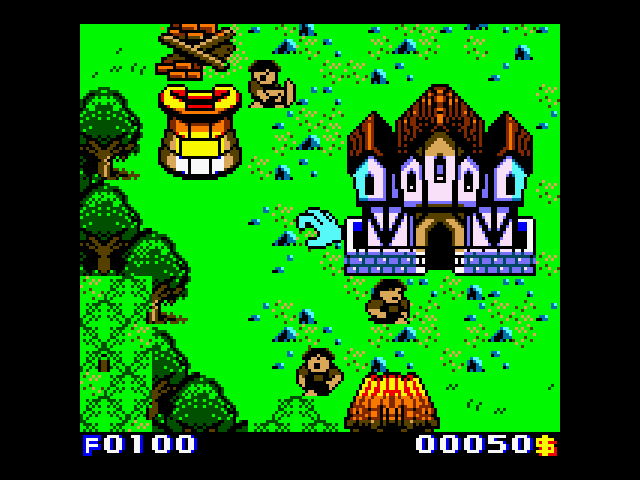
The Game Boy seemed well-suited for puzzle games and simple platformers, but Warlocked proved that the console could also be an effective platform for a real- time strategy game. One of the most ambitious Game Boy games ever made, Warlocked borrows heavily from the Warcraft series. The game gives players full control over entire armies and challenges them with a variety of objectives. During the game, players will be required to mine materials, construct buildings, destroy enemy bases, repair bridges, and embark on rescue missions. Players will also have to build farms, guard towers, barracks, and temples in order to keep their army strong. The armies themselves are made up of various units, including the usual assortments of knights and archers. Warlocked also lets players recruit powerful wizards to assist them. These wizards have many skills at their disposal, including teleportation and invisibility. They can even summon massive creatures or turn their enemies into chickens! Warlocked features two separate single-player campaigns (for a total of 26 individual missions) but also allows two human players to link up and battle each other. It even uses the Game Boy Color’s often-ignored infrared port to allow players to trade units with each other. As if the game wasn’t ambitious enough, Warlocked includes a variety of mini-games. If you get tired of managing medieval armies, you can always kick back with a round of Goblin poker.
9
Mario Tennis
2000
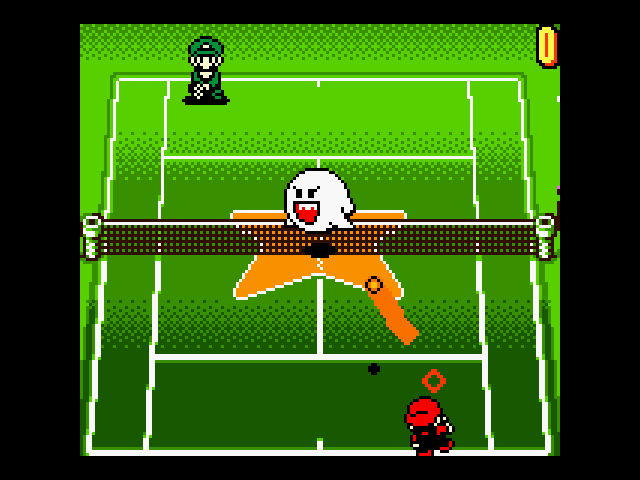
As you would expect, the premise of Mario Tennis involves various characters from the Mario universe competing against each other in tennis matches. The game makes it easy for players to adjust the power or spin on each shot, but the simple control scheme masks its true depth. A player’s shot is ultimately determined by their timing, the combination of buttons used, and the length of time the buttons are pressed. Although only two main buttons are used, a total of seven different types of shots are possible. This simple control scheme allows players of all skill levels to become familiar with the game, and it also encourages players to experiment with different types of shots. Like Mario Golf before it, the Game Boy Color version of Mario Tennis includes a compelling adventure mode that wasn’t present in its Nintendo 64 counterpart. The purpose of the adventure mode is for players to build up their skill level through training and practice matches before entering various tournaments. The ability to transfer your character data over to the N64 version via the Transfer Pak was a nice touch. Naturally, the game also allows two Game Boys to be linked together for some two-player tennis action. Tennis just wouldn’t be tennis without the ability to compete against a friend.
8
Shantae
2002
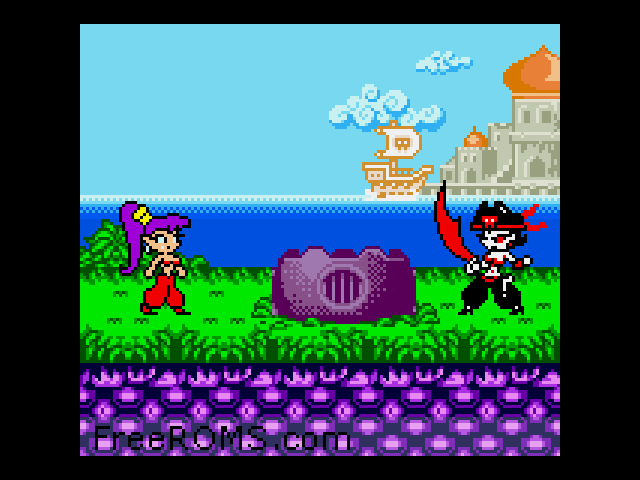
From a visual standpoint, Shantae is one of the most ambitious Game Boy Color games ever. In fact, it could easily pass for an early Game Boy Advance game. It doesn’t break a lot of new ground in the gameplay department, but Shantae has everything you’d want in a platformer. The games titular character is a perky female genie who uses her magical ponytail as a makeshift whip. Shantae can also perform a variety of magical dances in order to turn into various creatures. As a monkey, Shantae will be able to climb walls; as an elephant, she can knock down walls. The spider-form will allow Shantae to fit into tight spaces, and the harpy transformation will bestow on her the ability to fly. (When played on the Game Boy Advance, Shantae will be able to turn into a bizarre creature called a “tinkerbat” that possess abilities from the four aforementioned transformations!) The environments in Shantae are interesting, the levels themselves are huge, and there are clever puzzles to solve throughout the game. A dynamic day/night effect increases the replay value, as certain items will only appear during certain times in the day. It’s just unfortunate that Shantae arrived so late into the Game Boy Color’s lifespan, as it pushed the system in ways that few games did.
7
Pokémon Puzzle Challenge
2000
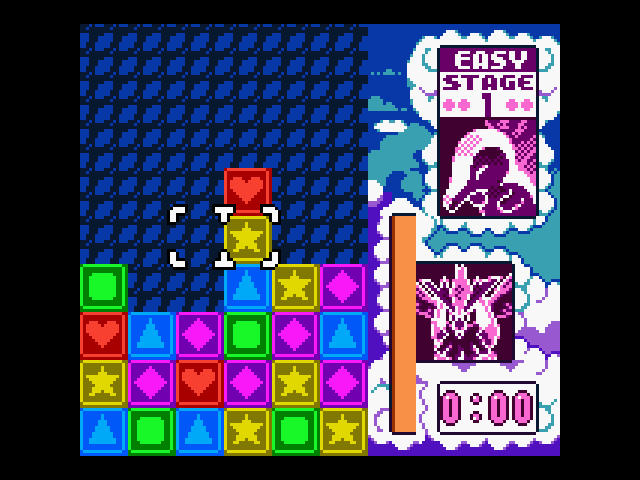
Pokémon Puzzle Challenge is essentially a modified version of Tetris Attack that makes use of various Pokémon-related themes and characters. While most puzzle games give the player direct control over the puzzle pieces themselves, Pokémon Puzzle Challenge lets players rearrange a grid of tiles by simply swapping adjacent tiles side-to-side. The premise is simple, but players who plan ahead will be able to form impressive chain combos and clear out multiple groups of tiles with a single move. Combos will clear the board and can contribute to high scores, but there is an even greater incentive to form combos when playing against an opponent. Any time a player is effectively able to string a combo together, their opponent will be bombarded with “garbage” blocks. The game is most fun when played with a second player, but Pokémon Puzzle Challenge also features several compelling single-player modes. For example: “Marathon” mode challenges players to score as many points as they can, “Challenge” mode pits players against computer-controlled opponents, and “Puzzles” features a variety of pre-arranged level layouts that have to be cleared within a set amount of moves. Pokemon Puzzle Challenge is very similar to the Nintendo 64 version of Pokemon Puzzle League, but some concessions had to be made in order to bring the game to the Game Boy. Due to the handheld’s limited resolution, Pokemon Puzzle Challenge is played on a 6×9 grid instead of the 6×12 grid that the console version used. The smaller playing field makes the game feel more claustrophobic and ultimately makes it harder to plan out combos in advance. These differences prevent Pokemon Puzzle Challenge from reaching the same level of greatness that its console predecessor did, but it’s still a deeply involving puzzle game.
6
Dragon Warrior III
2000
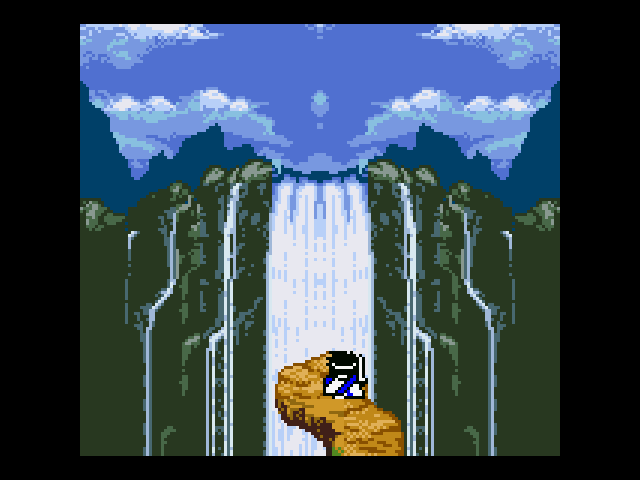
Dragon Warrior III is the greatest NES RPG of all time and one of the best game in the entire series. The basic battle mechanics didn’t evolve much from previous Dragon Warrior games, but the addition of a “class system” added several levels of depth to the game and made it one of the most replayable RPGs of its era. A character’s stats and abilities in the game were greatly affected by their class, so the player’s choices could potentially affect the game in profound ways. The Game Boy Color version is actually the third iteration of the game and is directly based off of the enhanced Super Famicom remake. It featured updated graphics, more animations, introduced a new class, and implemented a brand new personality system in which players would answer various moral dilemmas in order to establish their character’s base stats. The game also featured twice as many items as the NES version and a included a plethora of new mini-games. Players were also challenged with tracking down every one of the game’s 150 monsters in order to earn special medals. These medals could even be traded with other players via the Game Boy link cable! Random battles are often the most annoying aspect about any given RPG, but Dragon Warrior III eschewed this because the monster-hunting expeditions provided new incentives for players to engage in battle. The Game Boy had its weaknesses, but the system seemed like it was made for games like Dragon Warrior III.
5
Mario Golf
1999
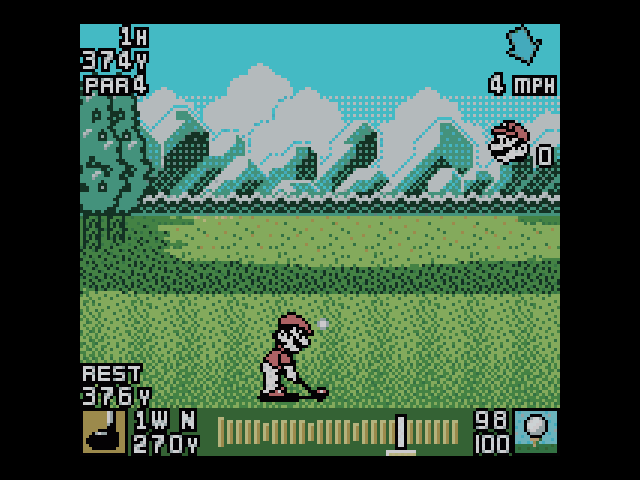
The Game Boy’s small screen and limited processing power meant that it wasn’t always an appropriate platform for sports games. Any sport that required players to keep track of multiple athletes, for example, was generally not a good fit for the system. Having said that, sports like golf are well-suited for the Game Boy, as they generally move along at a slower pace and are more focused on timing and technique than they are on frenetic action. Nintendo’s first golf game on the Game Boy (aptly titled Golf) was one of the best first-generation titles the console had to offer, but Mario Golf was in a different league altogether. In fact, the Game Boy Color version of Mario Golf was better than its Nintendo 64 counterpart in some regards. The interface in Mario Golf bears a strong resemblance to basically every other golf game from the era, but the amount of options in the game really make it stand out. The game features four complete courses, ten selectable characters, and a comprehensive record-tracking system. It’s also notable for a surprisingly robust adventure mode that’s loaded with RPG elements. During their adventures, players will encounter a variety of golf-based challenges and compete in numerous tournaments in an effort to build up their abilities. The character data can even be moved onto the N64 version via the Transfer Pak so players can use their created characters in three dimensions. Mario Golf is a great game to play “on the go” but it can also entertain you for hours on end. Rest assured, you won’t find a better sports game on the Game Boy.
4
Metal Gear Solid
2000
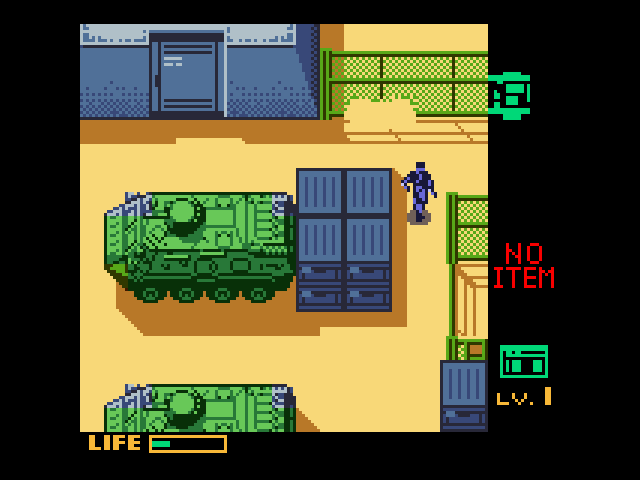
The Game Boy Color version of Metal Gear Solid (known as Ghost Babel in certain parts of the world) is based off of the PlayStation version, but it’s actually an original game developed specifically for the platform. It’s obviously not as cinematic as its PlayStation predecessor, but a lot of similarities can be seen in the core play mechanics. Like any respectable Metal Gear game, Ghost Babel features stealth-based gameplay, a convoluted storyline, and a plethora of interesting weapons and gadgets. Although the game is played from an overhead perspective (like the MSX and NES versions of Metal Gear), it also incorporates many elements from the landmark PlayStation title. For instance, players can lean against walls, reposition the camera behind Snake’s back, and have Snake tap walls in order to distract the enemies. The fact that players can move diagonally makes Ghost Babel feel considerably more refined than earlier 2D Metal Gear games. Unlike previous Metal Gear games, Ghost Babel is broken up into a series of separate stages, and players have the option of replaying previous missions. This new stage-based structure is perfectly suited for a handheld console and makes the game easier to pick up and play. Upon completing the game, players can replay the stages with new objectives! In addition to the central campaign, Ghost Babel also features a staggering 180 “VR Training” missions in which players can refine their skills. Ghost Babel even breaks new ground for the franchise by allowing two players to compete against each other in a mission via the Game Boy’s link cable. Metal Gear Solid is certainly one of the most ambitious Game Boy Color games of all time, and the amount of content in the game is simply astonishing.
3
The Legend of Zelda: Oracle of Ages/Seasons
2001
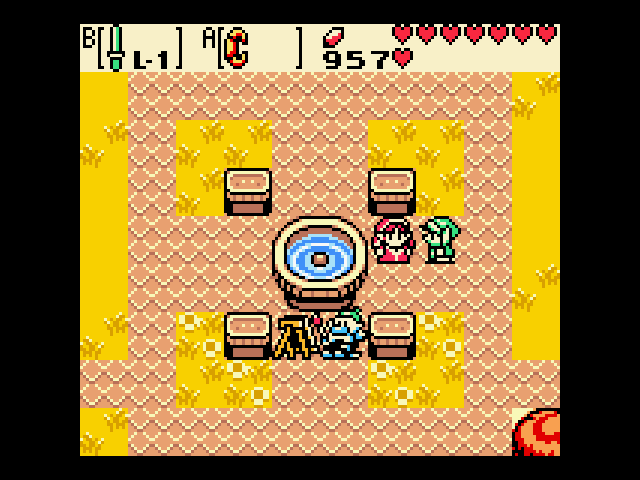
Oracle of Ages and Oracle of Seasons are separate games with unique dungeons, storylines, weapons, and characters. The games were developed concurrently by the same development team and were released on the same day, however, so I’m going to go ahead and recognize them as a single entry for the purpose of this list. Each Oracle game has a distinctive theme, but whether you’re controlling the seasons or altering the flow of time, you can expect to find challenging puzzles, interesting items, and charming characters. Players can also transfer data from one game to another by using a password system that allows for multiple endings and contributes to increased replay value. Zelda is second only to Mario as Nintendo’s most iconic franchise, so it was a little unexpected that Flagship Studios and Capcom were at the helm for the Oracle games. The game isn’t quite as legendary as Nintendo’s own Zelda offerings, but they still rank among the best adventure games of all time and could perhaps be described as the ultimate fan-made tributes. Needless to say, the new developers treated the franchise with tremendous respect and released two games that are truly worthy of the Zelda name.
2
Wario Land 3
2000
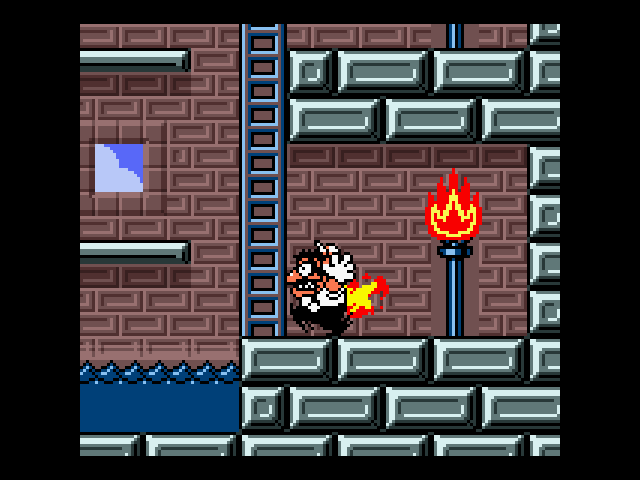
Wario Land II was one of the most unique platformers ever released on the Game Boy and was best-known for its “immortality” gimmick. In lieu of dying, Wario’s abilities and physical appearance would be altered in accordance to how he was attacked. If Wario was smashed with a hammer, he would be condensed into a spring and would be able to bounce around to reach higher altitudes. If Wario ate cake, he would become fat(ter) and his extra weight could crush the ground below him to reveal new areas. Wario Land 3 was built around the exact same premise, but featured nearly twice as many special abilities for Wario to experiment with. Once again, these powers were used in inventive ways. Getting bit by a bat, for example, would turn Wario into a vampire and give him the ability to turn into a bat himself. The levels in Wario Land 3 are full of branching pathways, secret exits, and hidden goals, so players have to master the mechanics of Wario’s transformation if they want to find everything in the game. The entire game is extremely clever and brilliantly designed. Wario Land 3 is not only one of the best platformers on the Game Boy Color, it’s one of the best platformers of all time.
1
Super Mario Bros. Deluxe
1999
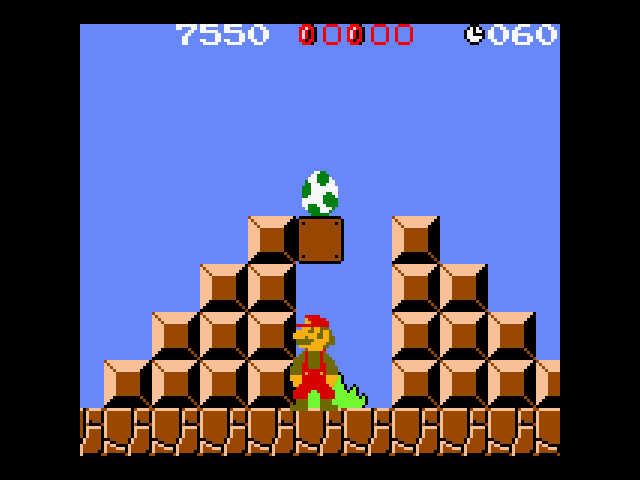
Super Mario Bros. Deluxe basically looks and plays exactly like the original NES version did. In fact, the sprites and backgrounds are pixel-for-pixel replicas of the original. (The resolution of the Game Boy screen obviously wasn’t as high as the NES, however, so Deluxe gave players the ability to scroll the screen to compensate for the reduced viewing distance.) As the name suggests, there are a lot of “deluxe” features added to the game. For instance, the game included a new world map and had Game Boy Printer functionality. More significantly, all 32 levels from the Japanese version of Super Mario Bros. 2 were included as an unlockable bonus! There was also a mode in which players were tasked with hunting down five rare coins in each level. Perhaps the best addition was the inclusion of a two-player mode. By linking two Game Boys together, players could race each other through various stages. Players could create obstacles for their opponents and impede their progress in this mode by activating switches along the way. Super Mario Bros. was already a timeless classic, but the added features made the Deluxe version an effective killer-app for an entirely new generation of fans. A better version of Super Mario Bros. would not have been possible on the Game Boy.

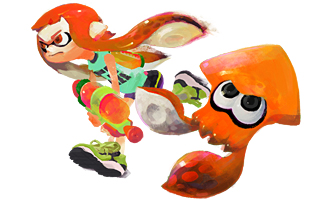
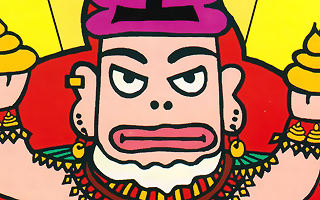
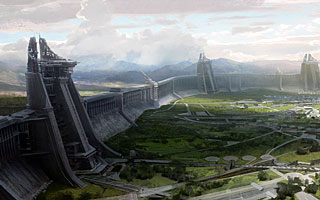
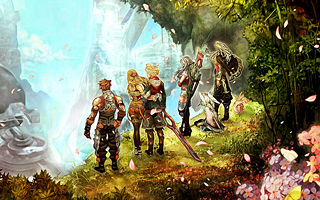
Do you agree with this list? Let us know what you think by leaving a comment below. Your opinion matters!